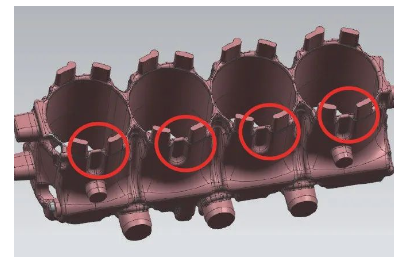Architecting a More Streamlined Structure with Integrated Design
For instance, casting, and especially in the context of electric vehicle (EV) chassis casting, is critical for improving structural integrity while lowering assembly complexity. By utilising cutting-edge casting technologies, manufacturers can erect large, unified sections of the EV chassis, which negates the necessity for several smaller components, thereby reducing joints and fasteners. The integrated solution also serves to not only streamline manufacturing, but also to add vastly better overall rigidity and stiffening of the frame.
More performance with less weight
Weight is a large factor in helping electric vehicles achieve the most range and efficiency. It makes provisions for item moulding using lighter metals like aluminum and magnesium are far lighter than heavier steel. For example, using aluminium in casting will provide up to 40% weight reduction of the chassis compared to the conventional steel components. This dramatic weight loss, in turn, leads to improved battery efficiency and extended driving range—a critical factor in any EV's level of performance.
One Shot Table of Precision and Complexity
Die casting is known for producing parts in high precision and complexity, casting processes. This is essential when creating EV chassis, which need complex arrangements to accommodate batteries, motors, and other essential components safely. The accuracy in the casting guarantees the perfect adaptation of each component of the chassis with minimal clearances, something that will undoubtedly make the vehicle to be built better in work and performance.

Resistance to wear and tear or corrosion
Materials used in the casting process, like aluminum alloys, have a high degree of resistance to corrosion, which is crucial in ensuring the electric vehicle's uptime and reliability. These materials help guarantee the longevity of the chassis amid adverse environmental conditions. Moreover, inherent characteristics of cast metals make them better able to absorb impact forces and impart them to the rest of the car in a crash.
Cost Efficiency at Scale
It is the most cost-effective way to mass produce any item, as it is the fastest to produce anything. The production line rapidly becomes far cheaper to use on a per unit basis- once you have covered the initial tooling and setup costs — so there is an economic argument to use it at high production levels in the automotive industry. Contemporary casting methods can provide surface finishes and dimensional accuracies that are good enough for many applications, with minimal use of secondary machining and finishing, adding to the cost-effectiveness of these processes.
Innovative Uses in EV Design
But not only has it traditionally been sign of boring parts; casting, back in the day, was also about joining cars together in new, and excitingly inefficient, ways. One application where die cast chassis parts demonstrate innovation while keeping safety and performance in perfect balance is in the integration of the cooling channels during the casting process for battery thermal management.
Learn More About EVs and Casting
For a more in-depth analysis of how casting technology is changing electric vehicle design, notably in chassis production, check out Casting Electric Vehicle Chassis.
Final Thoughts
The new casting processes for EV chassis mfg are game-changing, with benefits from advanced design capability and weight savings to cost-effectiveness and improved vehicle performance. With the EV market continuing to proliferate, casting techniques will play an increasingly pivotal role in delivering sustainable, efficient and high-performance vehicles.